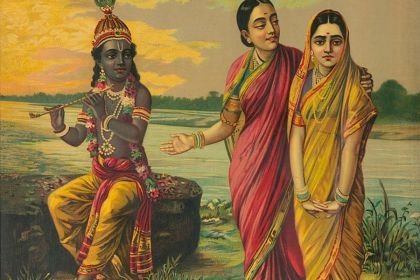MEDITATION
Om Namo Narayanaya: meaning and purpose of popular Vishnu mantra

Sheshashayi - Laxminarayan by M. V. Dhurandhar
Om Namo Narayanaya is one of the best-known Sanskrit mantras addressed to the god Vishnu—one of the principal deities of Hinduism who, in alliance with Brahma and Shiva, forms the triple deity personifying the cosmic functions of creation, maintenance, and destruction. In India, the mantra is very popular among adherents of Vaishnavism, while globally it is promoted by the yoga communities as a mantra of peace.
The eight-syllable Om Namo Narayanaya mantra can be traced back to 1000 BCE as it appeared in the Samaveda, one of the four Vedas containing religious texts recognized as the oldest scriptures of Hinduism.
The meaning of the Om Namo Narayanaya mantra is easy to grasp through the combination of its three words:
- Om is widely recognized by spiritualists as the primary sound that created the observable universe;
- Namo is the Sanskrit equivalent of the common Indian greeting Namaste or Namaskar;
- Narayanaya is a Vishnu name mentioned among others in Vishnu Sahasranama used here with the ending "-aya" which gives the noun a meaning similar to the preposition in English and is equivalent to "for".
Thus, the mantra greets Vishnu through his name Narayana composed of the Sanskrit words "nara" and "ayana" which can be interpreted as "water" and "resting place" respectively. This is why Narayana is often depicted lying on Shesha, the thousand-headed snake swimming in the ocean of bliss.
Listen to Om Namo Narayanaya by Balamuralikrishna:
The word "nara" alternatively means "living entities" which directly associates the chanting of the Om Namo Narayanaya mantra to the cultivation of a more mindful state, generating feelings of relaxation, peace, and happiness in all living beings.



